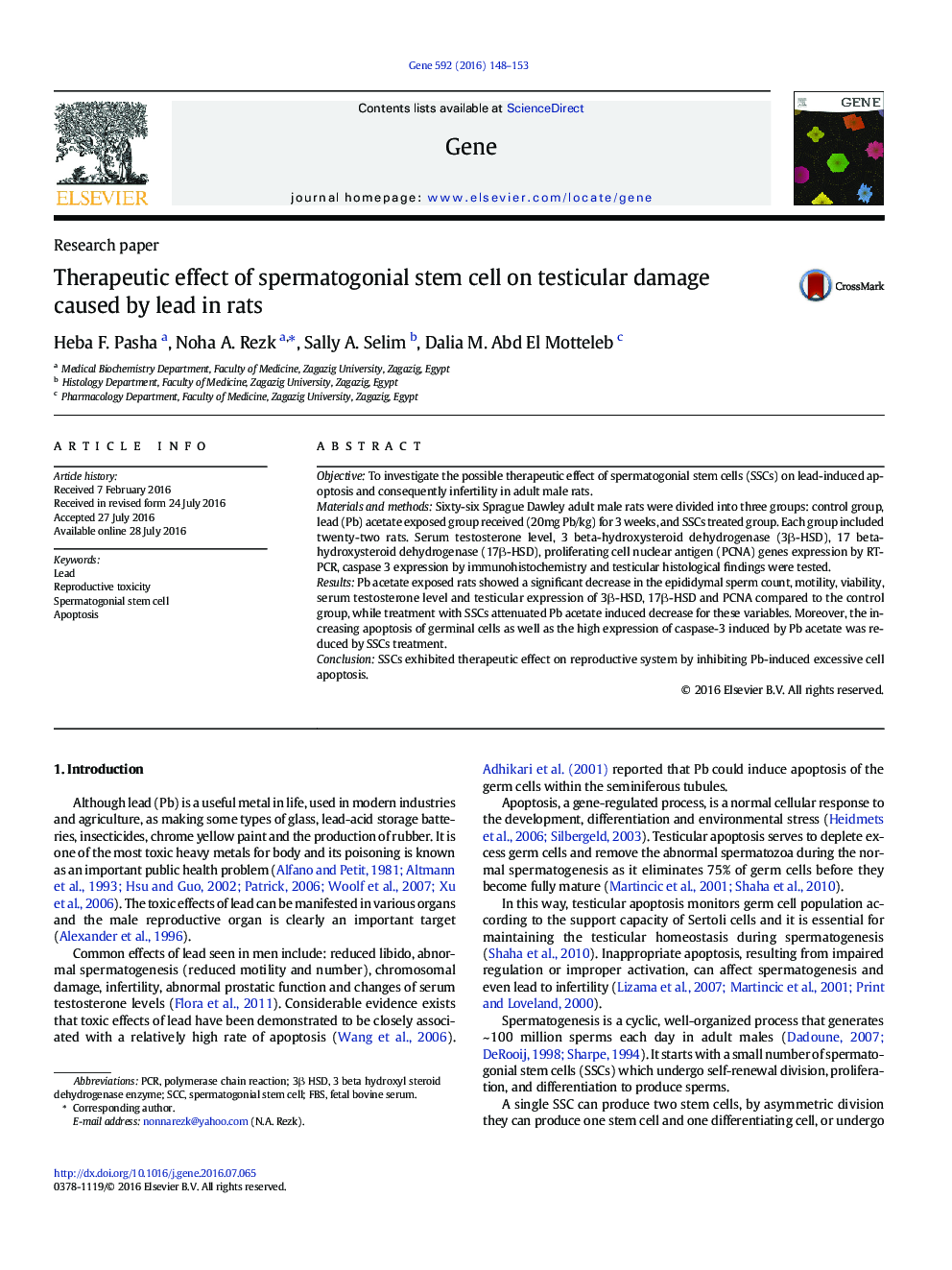| کد مقاله | کد نشریه | سال انتشار | مقاله انگلیسی | نسخه تمام متن |
|---|---|---|---|---|
| 5905095 | 1159829 | 2016 | 6 صفحه PDF | دانلود رایگان |
- Pb acetate exposed animals showed decrease in sperm count and motility.
- Testicular 3β HSD and 17 β HSD was decreased in Pb exposed group compared to controls.
- Serum testosterone level was decreased in Pb exposed group compared to controls.
- Treatment with SCCs attenuated Pb acetate induced decrease for these variables.
ObjectiveTo investigate the possible therapeutic effect of spermatogonial stem cells (SSCs) on lead-induced apoptosis and consequently infertility in adult male rats.Materials and methodsSixty-six Sprague Dawley adult male rats were divided into three groups: control group, lead (Pb) acetate exposed group received (20mg Pb/kg) for 3 weeks, and SSCs treated group. Each group included twenty-two rats. Serum testosterone level, 3 beta-hydroxysteroid dehydrogenase (3β-HSD), 17 beta-hydroxysteroid dehydrogenase (17β-HSD), proliferating cell nuclear antigen (PCNA) genes expression by RT-PCR, caspase 3 expression by immunohistochemistry and testicular histological findings were tested.ResultsPb acetate exposed rats showed a significant decrease in the epididymal sperm count, motility, viability, serum testosterone level and testicular expression of 3β-HSD, 17β-HSD and PCNA compared to the control group, while treatment with SSCs attenuated Pb acetate induced decrease for these variables. Moreover, the increasing apoptosis of germinal cells as well as the high expression of caspase-3 induced by Pb acetate was reduced by SSCs treatment.ConclusionSSCs exhibited therapeutic effect on reproductive system by inhibiting Pb-induced excessive cell apoptosis.
Journal: Gene - Volume 592, Issue 1, 30 October 2016, Pages 148-153
